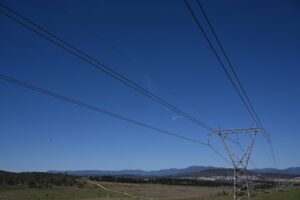 As the nation’s distributors continue to announce the pending armageddon with regard to their revenue models, the measures they are taking under the auspices of “cost reflective pricing” are falling way short of the mark and in reality open the doors to future legal challenges and compensation.
As the nation’s distributors continue to announce the pending armageddon with regard to their revenue models, the measures they are taking under the auspices of “cost reflective pricing” are falling way short of the mark and in reality open the doors to future legal challenges and compensation.
If I was to sell you petrol, I must measure the amount of petrol delivered to your vehicle but also, I must measure the temperature of that fuel to ensure I am delivering a uniform volume regardless of the fluctuating temperature of the product, this is the law. Now if you consider electricity in the same way, there are again two main variables to consider at the exact time of delivery, one is the cost of the actual electricity and the other is the cost of delivery.
Both of these items vary in costs minute by minute and significantly, both can be accurately measured instantaneously. Distributors are now universally measuring electricity volume and demand in Kilovolt Amperes instead of Kilowatts, which is a much more accurate measure. Queensland’s Energex has just launched their new regime which actually rewards large customers who’s power factor exceeds 0.92, but punishes those below 0.92.
One of the less justifiable transitions however is the focus of demand charging over volume consumption, this new focus is said to more fairly apportion the costs of building and maintaining network assets, which on the face of it looks quite valid. However, it’s the way they currently measure and charge for demand that smacks of a sloppy, broad brushed regime instead of a highly accurate and targeted scheme that can and should be used instead with most measuring technology in place. As an example, a customer who has installed 100 kilowatts of solar onto his engineering workshop. This business is, and will remain a “Large” customer and therefore will stay on a demand tariff.
Despite the customer’s sizeable investment in solar for his complex, little or no relief is available to his demand charges because he starts up his machines at five o’clock in the morning, when there is no sun. He has minimal air-conditioning and a uniform load all day which drops off sharply at three-thirty in the afternoon. By installing solar, this customer has removed up to one hundred kilowatts of demand from the network when the network needs relief, which is in the noon to mid-afternoon period. For this, the customer receives absolutely no consideration and the peak that is occurring at a low point in the networks demand cycle (at six AM), is charged as if it was in the mid-afternoon.
It is reasonable for the customer to argue that the network can and must properly measure the true cost of supplying electricity to this business and therefore take into account the time of his peak demand, not just the size of it. Now one can appreciated that in a heavy industrial area, the actual peak on the network may in fact occur at Six a.m. in the morning, but it would be a very rare occurrence indeed, and this demand concentration would apply only to a small amount of assets in that area, as we move away diversity diminishes this demand exponentially. Why can we not achieve measurement of electricity under the National Measurement Act, the act that nearly every other business must follow, sure we may have it in place for volume charging, but it can be accurately applied to demand or “capacity” charging, so why isn’t it?
Rob Campbell is Managing Director of Australian Solar Systems.








